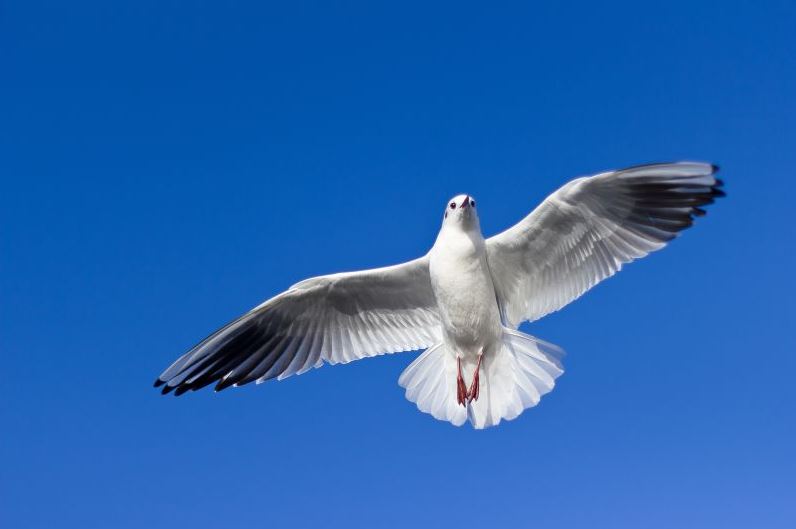Birds possess one of the most fascinating abilities in the animal kingdom: flight. But how do birds learn to fly? This question has intrigued scientists and bird enthusiasts for centuries. Learning to fly is not an instinctive process—it is a skill developed through progressive learning, muscle development, and environmental adaptation. In this article, we will explore in detail how young birds acquire flight, the stages of their development, and the science behind their airborne abilities.
The Early Stages: Preparing for Flight
1. Nestling Stage: Growth and Muscle Development
From the moment a bird hatches, it begins preparing for the eventual challenge of flying. During the nestling phase, which typically lasts a few weeks, young birds are completely dependent on their parents. They focus on consuming large amounts of food to support their rapid growth. Their small bodies are covered in down feathers, which provide warmth but do not yet allow for flight.
During this period, their muscles, especially those responsible for wing movement, begin to develop. The pectoral muscles, essential for wing control and power, must strengthen significantly before they can sustain flight. The parents play a crucial role, not just in feeding but also in providing safety while the nestlings grow.
2. Fledgling Stage: First Attempts at Movement
After a few weeks, birds enter the fledgling stage, during which they begin their first real attempts at movement. At this stage:
- Their flight feathers start growing in, replacing their downy fluff.
- They begin to flap their wings, learning the mechanics of wing control.
- They practice hopping and climbing, sometimes using their wings to help stabilize themselves on branches or uneven surfaces.
- They start to develop balance and coordination, key components of successful flight.
This phase is vital, as it teaches young birds how to use their wings before attempting full-fledged flight.
The Science Behind Learning to Fly
1. Wing Flapping and Muscle Coordination
A crucial part of flight learning involves wing flapping. Young birds instinctively begin flapping their wings in short bursts, often while still in the nest. These movements help build muscle memory and coordination, allowing the birds to gain control over their wing strokes. Wing flapping also helps strengthen the pectoral muscles, which provide the power necessary for sustained flight.
2. Gravity-Assisted Learning and Jumping Practice
Many birds learn to fly by jumping from elevated positions, such as tree branches or cliffs. They initially use their wings to slow their descent rather than for full flight. This gradual gravity-assisted learning process allows them to gain confidence while adjusting their wing angles to achieve stability. Scientists believe that this method mirrors how early avian ancestors may have developed flight capabilities.
3. Gliding and Short Flights
Once young birds have gained enough strength and control, they begin gliding short distances. These brief, controlled flights help them understand air resistance, wing positioning, and landing techniques. Over time, they refine their skills, adjusting their wing movements to stay airborne for longer periods.
Parental Guidance and Social Learning
1. Observational Learning from Parents
Birds do not learn to fly alone—parental guidance plays a crucial role. Adult birds often demonstrate flight behaviors, encouraging fledglings to mimic their actions. Parents sometimes coax their young out of the nest by bringing food to a nearby branch, forcing them to make short leaps and flaps to reach it.
2. Encouragement and Repetition
Through repeated practice, fledglings gain confidence. Each attempt, whether successful or not, provides valuable experience. Parents may even push hesitant fledglings out of the nest, encouraging them to take their first real flight.
3. Safety and Survival Training
Beyond flight mechanics, young birds must also learn how to avoid predators, navigate their environment, and recognize potential dangers. These lessons are crucial for survival in the wild.
The Role of Wing Structure and Physics
1. Wing Shape and Aerodynamics
Different species of birds have uniquely adapted wing structures that influence how they learn to fly:
- Broad wings with rounded edges (e.g., eagles, hawks) provide stability and are suited for soaring.
- Narrow, pointed wings (e.g., swallows, falcons) are built for speed and agility.
- Short, rounded wings (e.g., sparrows, robins) allow for quick maneuverability in dense forests.
Understanding these aerodynamic properties helps scientists determine how different bird species master flight techniques.
2. The Role of Primary and Secondary Feathers
Birds rely on primary feathers for propulsion and secondary feathers for lift. During early flight attempts, fledglings experiment with different wing angles to maximize lift and minimize drag, refining their movements over time.
Challenges and Adaptations in Learning to Fly
1. Environmental Factors
Young birds must contend with environmental challenges, such as:
- Wind conditions, which can make flight training easier or harder depending on strength and direction.
- Obstacles like trees and buildings, which require maneuvering skills.
- Predators, which can force fledglings to master flight quickly to escape danger.
2. Species-Specific Learning Curves
Not all birds learn to fly at the same pace. Some species, such as pigeons, develop flight skills quickly, while others, like large raptors, take months before mastering the art of flying. Waterfowl species, like ducks and geese, must strengthen their wings significantly before taking their first flights.
Conclusion: Mastering the Sky
Learning to fly is a complex, multi-stage process involving physical development, practice, parental guidance, and environmental adaptation. Each bird species follows a unique learning trajectory, but all share the same fundamental stages—building strength, practicing movements, and gradually mastering controlled flight. The journey from a helpless hatchling to an independent, flying bird is an incredible testament to the adaptability and intelligence of avian species.
By understanding how birds learn to fly, we gain deeper insights into the evolution of flight, animal behavior, and the intricate ways nature prepares its creatures for survival in the wild.

